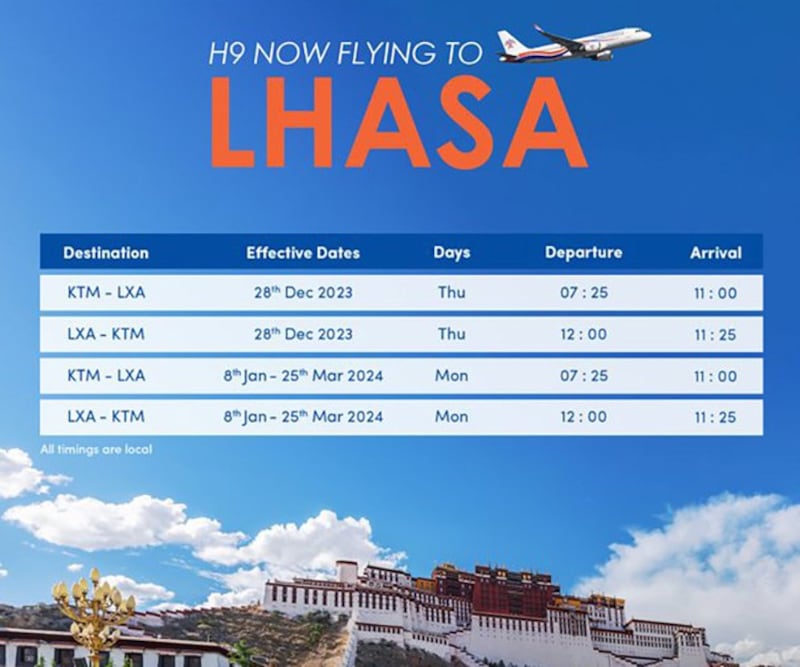Nepal’s Himalaya Airlines announced it will begin weekly flights between Kathmandu and Tibet’s regional capital of Lhasa this week, the first non-Chinese airline to receive permission to fly into Tibet.
The move is aimed at bolstering tourism, an airline spokesperson told Radio Free Asia. “No other airline has received this permission,” she said.
The inaugural flight by the Kathmandu-based airline – a joint venture between Nepal and China – to Lhasa is set to take off from Kathmandu on Thursday and is scheduled to operate once a week.
China has expanded its economic and political influence in the Himalayan country sandwiched between it and India. A recent report said that China's sway within Nepal has led to stricter regulations on the estimated 20,000 Tibetans residing in the country, many without legal status.
Nepal “has become a highly unsafe and insecure place for Tibetan refugees to exercise basic human rights, including freedom of religion, culture and expression,” according to the report from Seoul-based Asian Dignity Initiative and Dharamsala, India-based advocacy group Tibetan Centre for Human Rights and Democracy.

Formerly an independent nation, Tibet was invaded and incorporated into China by force 70 years ago. Chinese authorities maintain a tight grip on the region, restricting Tibetans’ political activities and peaceful expression of cultural and religious identity.
Tourism to religious sites
After cutting back operations during the COVID-19 pandemic, Himalaya Airlines has recently added several routes into China and elsewhere in Asia.
In June, it announced scheduled flights to Beijing, and earlier this month, it began flying routes to Shanghai and Chongqing.
The airline said in a statement announcing the resumption of flights to Chongqing that it is committed to "enhancing connectivity and promoting bilateral ties between Nepal and China."
The flight to Lhasa will help Nepal facilitate more tourism to Mount Kailash and Lake Manasarovar – revered pilgrimage sites for Buddhists and Hindus located in southwest Tibet, according to Santosh Sharma Poudel, a foreign policy analyst and co-founder of the Kathmandu-based Nepal Institute for Policy Research.
Flying Nepali and Indian tourists through Lhasa to get to Mansarovar would be “much cheaper and faster than through the current route overland,” he said. The tour packages to the sites are also touted as one of the most lucrative for tour operators in Nepal.
Tourists traveling to Lhasa or other parts of the Tibetan Autonomous Region must obtain a Tibet Travel Permit or a Tibet Entry Permit, in addition to a Chinese visa.
The Chinese government is looking at the Lhasa flight as an economic opportunity and as a way to increase people-to-people relations under its Belt and Road Initiative, or BRI, Poudel said.
BRI is China's decade-old global infrastructure development strategy that aims to connect Asia, Europe and Africa through a network of roads, railways, energy pipelines and ports. Nepal signed a cooperation agreement with China in 2017 to participate in the BRI.
Edited by Matt Reed and Malcolm Foster.
